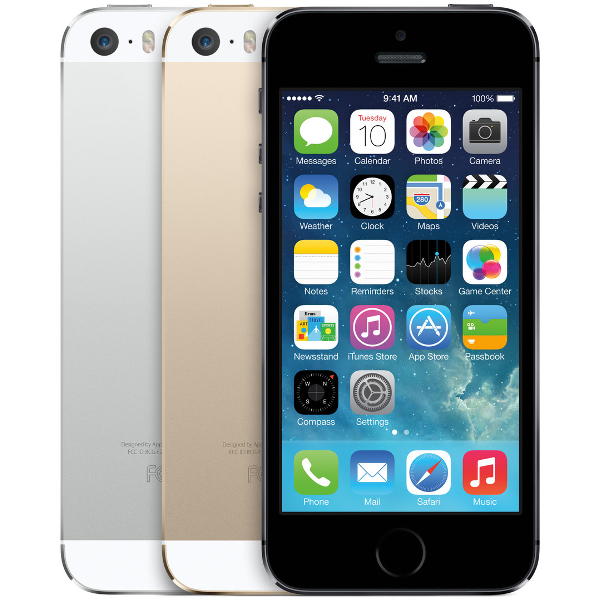HTC One (M8) And One (E8) Review: A Flagship And Its Sidekick
We run HTC's flagship Android smartphone, the One (M8), through our exhaustive benchmark suite. In addition, we take a close look at its less expensive sibling, the HTC One (E8). Both devices are compared and tested against a strong field of competition.
How We Tested HTC's One (M8)
Benchmark Suite
Our current Android test line-up is composed of six key sections: CPU, GPU, GPGPU, Web, Display, and Battery.
| CPU | AnTuTu X, Basemark OS II Full, Geekbench 3 Pro, MobileXPRT 2013 |
|---|---|
| GPU | 3DMark, Basemark X 1.1 Full, GFXBench 3.0 Corporate |
| GPGPU | CompuBenchRS |
| Web | Browsermark 2.0, JSBench, Peacekeeper 2.0, WebXPRT 2013 |
| Display | Brightness (Min/Max), Black Level, Contrast Ratio, Gamma, Color Temperature, Color Gamut Volume (sRGB/AdobeRGB) |
| Battery | Basemark OS II Full, BatteryXPRT 2014, GFXBench 3.0 Corporate |
Test Methodology
All handsets are benchmarked on a fully-updated copy of the device’s stock software. The table below lists other common device settings that we standardize to before testing.
| Bluetooth | Off |
|---|---|
| Brightness | 200 nits |
| Cellular | SIM Removed |
| Display Mode | Device default (non-adaptive) |
| Location Services | Off |
| Power | Battery |
| Sleep | Never (or longest possible interval) |
| Volume | Muted |
| Wi-Fi | On |
Comparison System Specs
The table below contains all the pertinent technical specifications for today’s comparison units:
The iPhone 5s represents ARM v8, Meizu's MX3 represents the Exynos 5 Octa, Xiaomi's Mi3 represents Nvidia's Tegra 4, Google's Nexus 5 represents Snapdragon 800 performance on Android, and the Lumia Icon represents the same chipset in Windows Phone 8.1.
Although we benchmarked the HTC One (M8), the One (E8) offers identical performance as a result of its identical internals.
Get Tom's Hardware's best news and in-depth reviews, straight to your inbox.
Current page: How We Tested HTC's One (M8)
Prev Page Camera Features And Example Photos Next Page Results: CPU BenchmarksDon Woligroski was a former senior hardware editor for Tom's Hardware. He has covered a wide range of PC hardware topics, including CPUs, GPUs, system building, and emerging technologies.
-
Heironious The pricing says 1,309.00 for it on Amazon? May as well buy it straight from an authorized dealer for half that. It's a gorgeous phone and I don't regret picking it up over the Samsung S5 (mostly because of the cheap plastic of Samsung).Reply -
LordConrad I love my M8 except for that stupid depth-camera, they should remove it and bring back OIS.Reply -
JOSHSKORN Just stop comparing to the iPhone 5s until a comparable 64-bit chip is released and implemented into Android phones. Until then, the iPhone 5s "appears to be faster" (only on benchmarks) but as many of us know, it justifies buying an iPhone for most users, even though a 64-bit processor in a mobile phone may be pointless (for now).Reply -
CaedenV If I were the android type I would get this phone hands-down. If they released a WP version then I would jump all over it over the stuff Nokia has been pushing out in 2014 so far.Reply
The only 'complaints' that I have are the lack of wireless charging (impossible due to the metal back plate right?), and the lack of a sort of Nokia Glance screen (though other android devices are picking up similar features). The cover seems to bring that Glance functionality... but I really don't like that cover and would rather not. The thing is that with my lowly 920 I have built myself an upright wireless charging stand, and with glance screen enabled whenever the device has access to power, it makes a most excellent clock/notification center. With my 920 approaching 2 years old I am starting to look for a replacement, and as of the moment I am not finding one. WP has seemingly abandoned the high end devices, I am not apple compatible, and Android devices have a lot of really neat features... but then you deal with non-standard UIs and gimmickey software. I really hope something really good comes out before Christmas because the 920 is not getting any younger. -
stevessvt Wow, these benchmarks are, by far, the lowest I have seen for the M8. 27K in Antutu? Was power saver on?Reply -
Avus Holy!! $1300 for a phone.... I am too cheap for that...Reply
I am currently using Nexus 5 and happy with it. If I want to buy a phone now, I may want to get an Oneplus One. -
envy14tpe Great phone but that camera is what holds me back from buying it. So Samsung or Google gets my money, although Apple has the best camera. (However, no Apple..screen wayyy to small...Android flagship phones have been over 4" for 2+ years)Reply -
TeKEffect Me and my friend are both having problems with the usb port. They went cheap on the cheapest part. I would google the problem before getting the one.Reply


